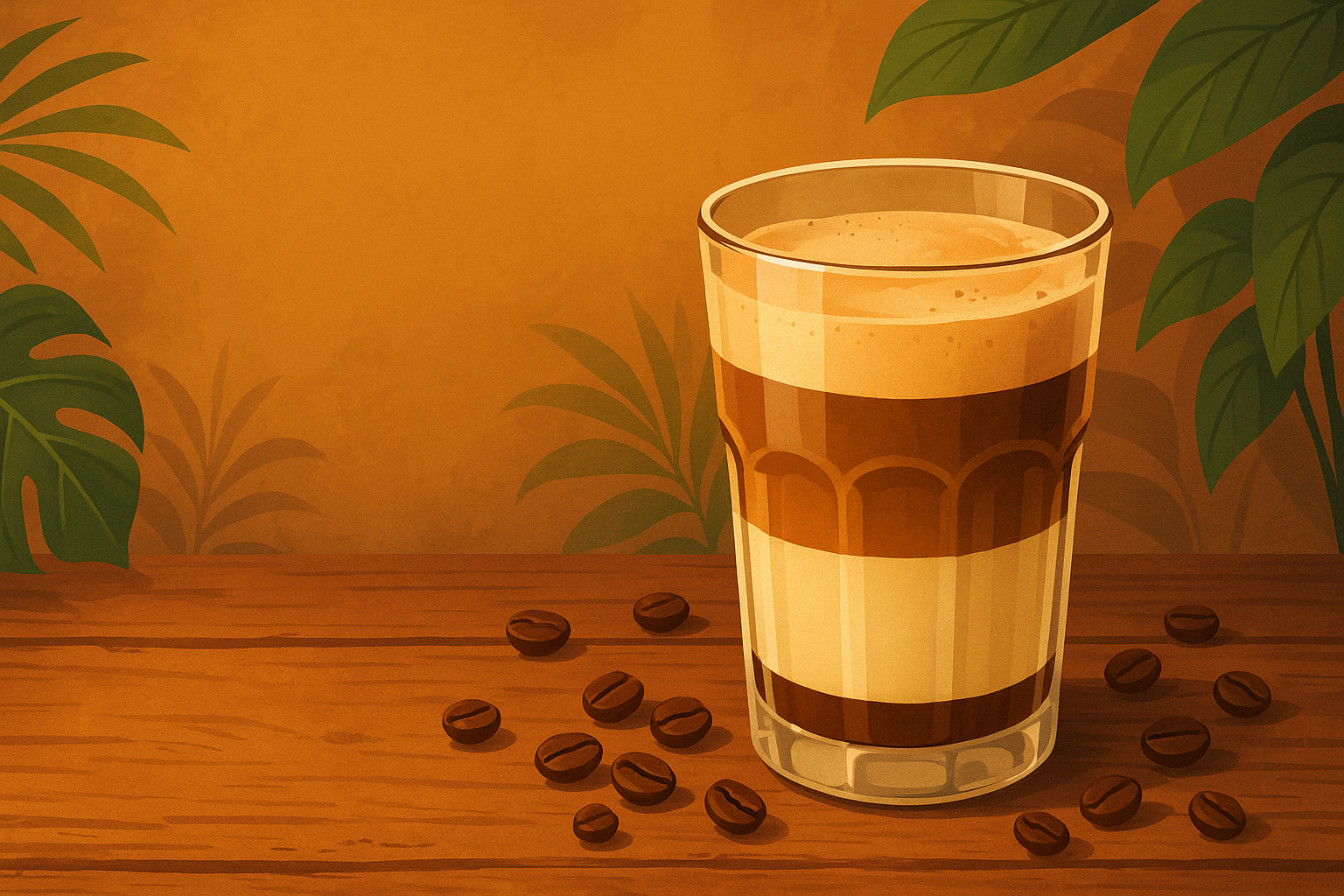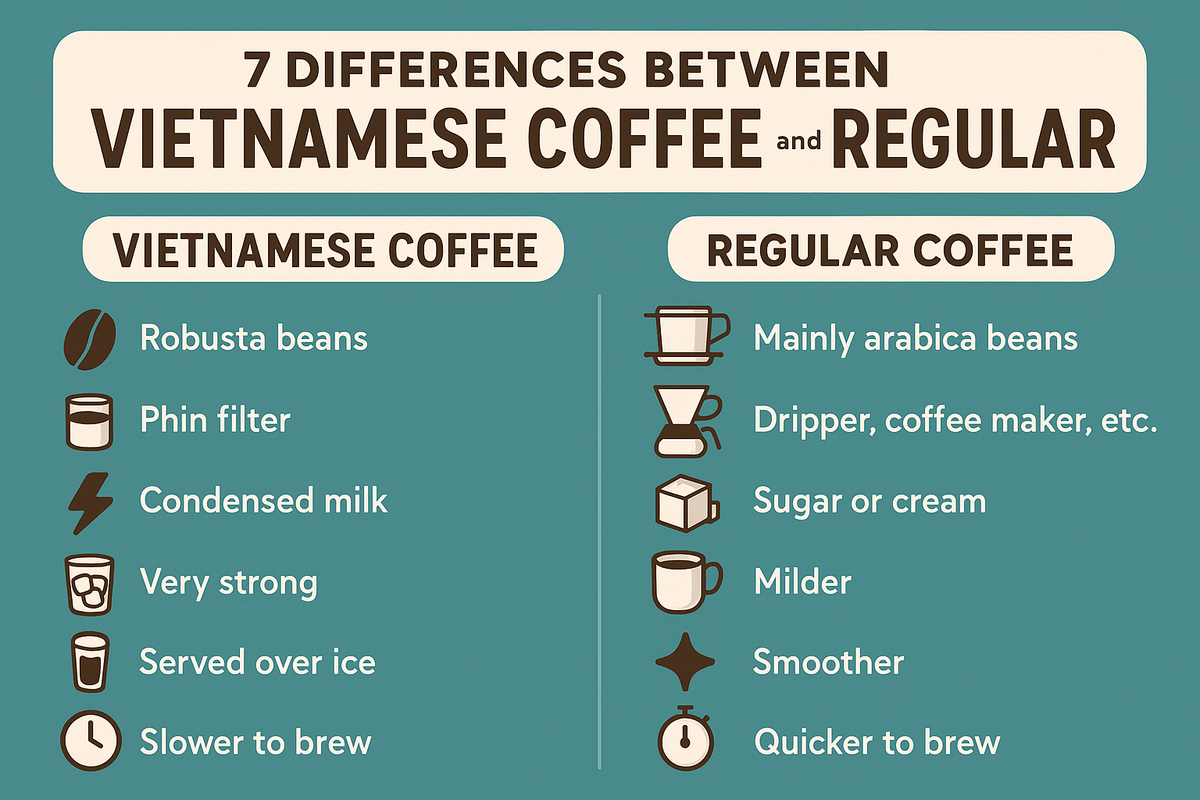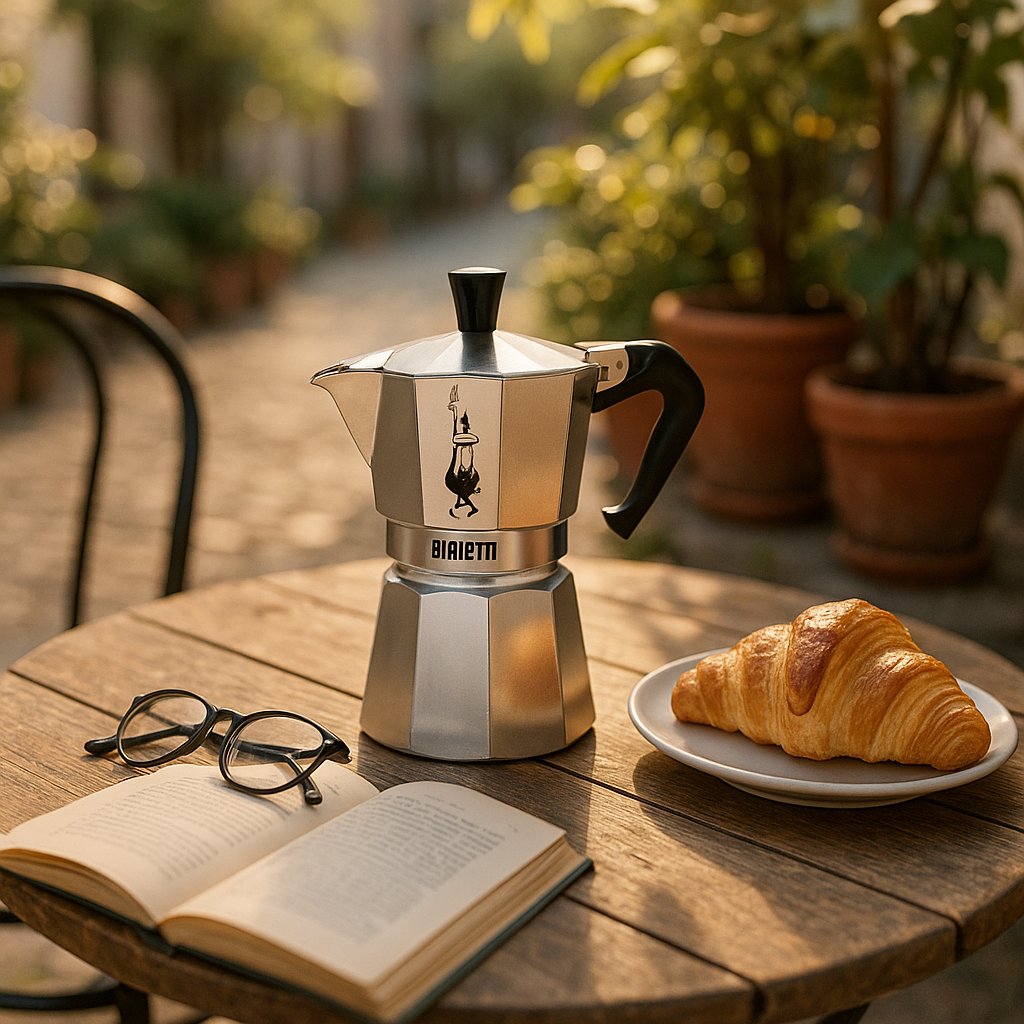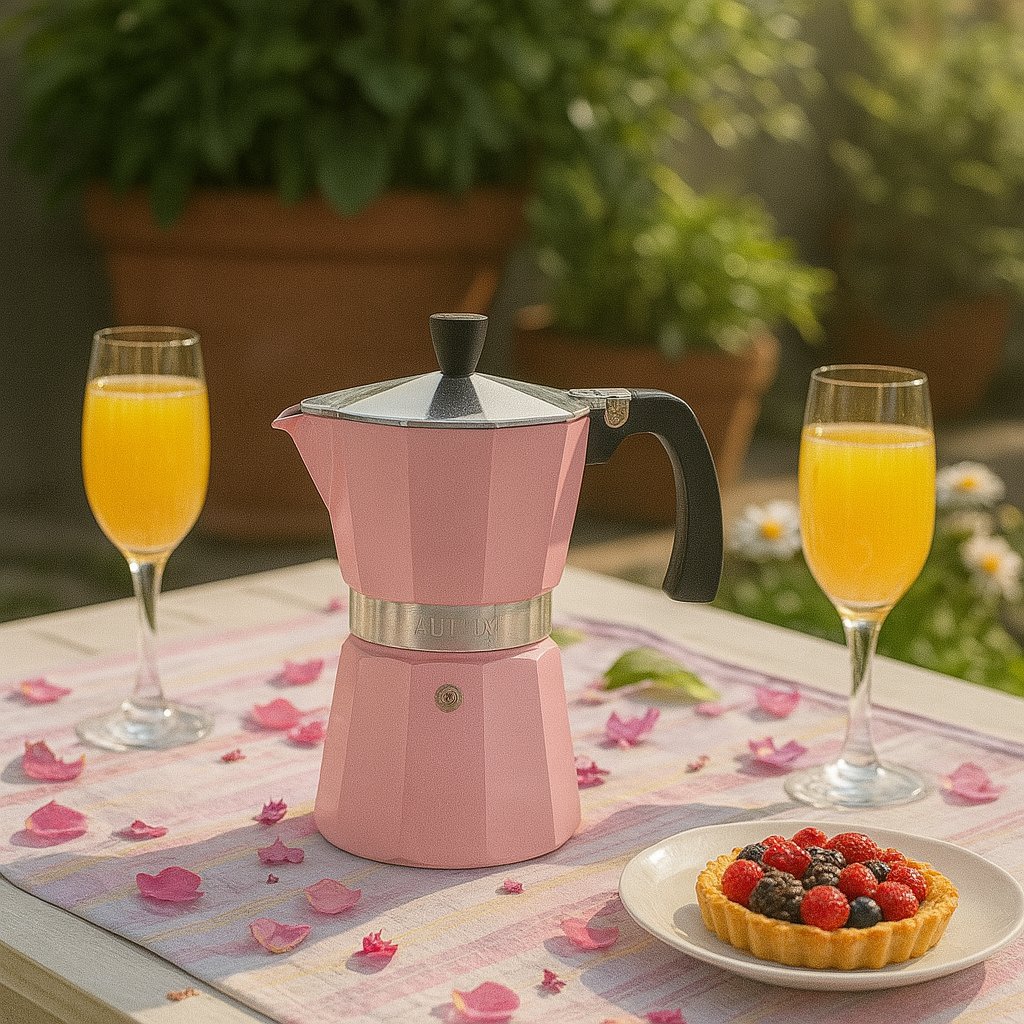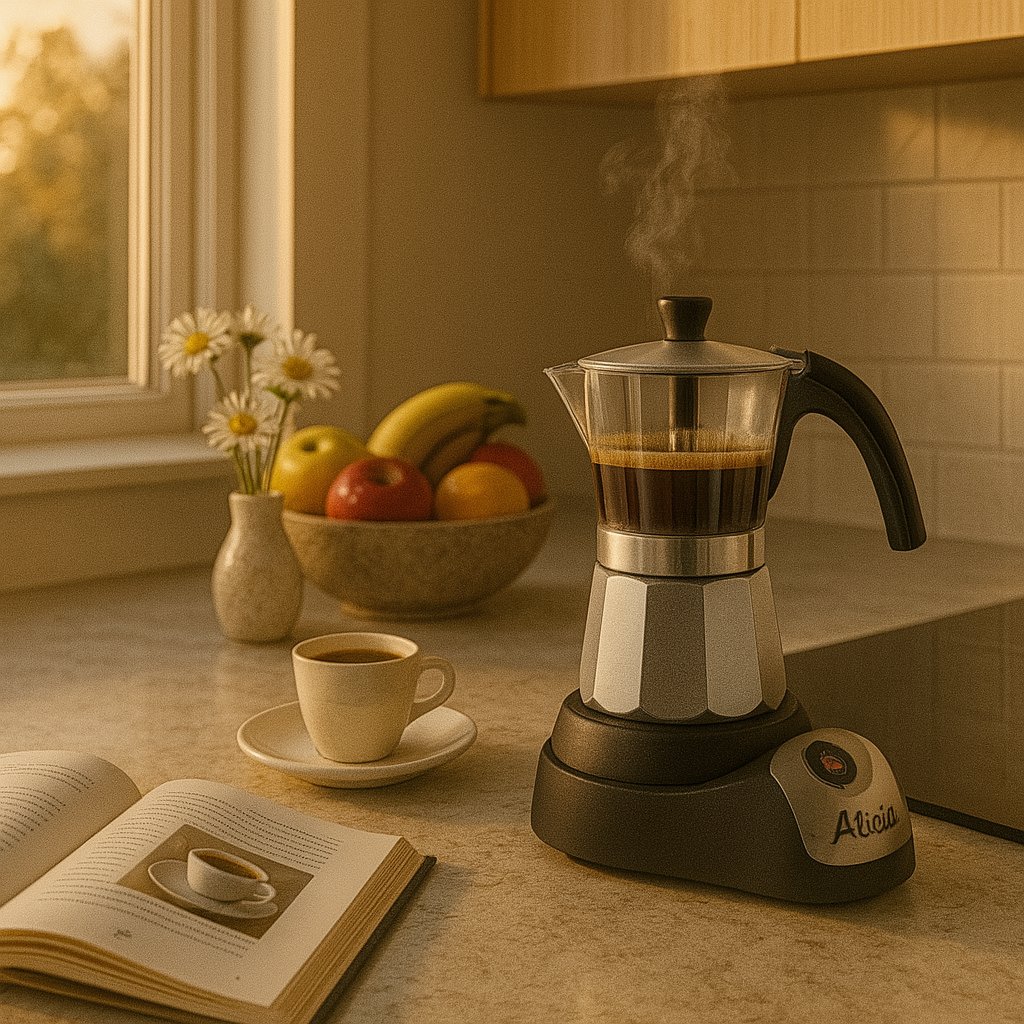How to Use a Vietnamese Phin Filter: Complete Brewing Guide
Master the art of Vietnamese drip coffee with Marco's comprehensive phin filter guide, featuring authentic techniques from Saigon's best cafés.

Introduction: Mastering the Art of Vietnamese Coffee
During my coffee journey from the bustling espresso bars of Rome to the specialty roasters of Seattle, nothing prepared me for the meditative experience of Vietnamese coffee brewing. My first encounter with a phin filter was in a small café tucked away in Ho Chi Minh City's District 1, where an elderly gentleman patiently taught me the nuances of this simple yet sophisticated brewing method.
The Vietnamese phin filter, or "phin ca phe" as it's known locally, represents more than just a brewing device—it's a gateway to understanding Vietnamese coffee culture, where time slows down and coffee becomes a ritual of mindfulness. Unlike the quick extraction methods popular in Western coffee culture, the phin demands patience, rewarding those who master its techniques with some of the most intensely flavorful coffee you'll ever taste.
In this comprehensive guide, I'll share everything I've learned about using a Vietnamese phin filter, from selecting the right equipment to mastering the perfect brewing technique. Whether you're completely new to Vietnamese coffee or looking to refine your skills, this guide will help you unlock the authentic flavors that have made Vietnamese coffee a global phenomenon.
What is a Vietnamese Phin Filter?
The Vietnamese phin filter is a metal drip coffee maker consisting of four simple components: a brewing chamber, a perforated brewing plate, a lid, and a base that sits atop your coffee cup or glass. This elegantly simple design, virtually unchanged since its introduction to Vietnam during French colonial rule, creates a slow-drip brewing process that extracts maximum flavor from Vietnam's robust Robusta coffee beans.
Components of a Phin Filter
The Four Essential Parts:
- Top Brewing Chamber: Holds the coffee grounds during brewing
- Perforated Brewing Plate (Gravity Press): Controls extraction speed and prevents grounds from falling through
- Lid: Retains heat and prevents contamination during brewing
- Drip Base: Sits on your cup and catches the brewed coffee
Phin Filter Materials and Sizes
Traditional phin filters are made from stainless steel or aluminum, with stainless steel being preferred for its durability and heat retention properties. They come in various sizes, typically measured by the amount of coffee they can brew:
- Single-serve (4-6oz): Perfect for individual cups
- Medium (8-10oz): Great for sharing or multiple small servings
- Large (12oz+): Ideal for multiple people or stronger coffee preferences
Choosing the Right Coffee Beans
Traditional Vietnamese Coffee Beans
Authentic Vietnamese coffee relies heavily on Robusta beans, which contain nearly twice the caffeine of Arabica and possess the bold, bitter characteristics that complement the sweet condensed milk traditionally added to Vietnamese coffee. During my visits to coffee farms in the Central Highlands, I learned that the best Vietnamese coffee comes from beans grown at moderate altitudes in rich volcanic soil.
However, modern Vietnamese coffee culture has evolved to include Arabica blends and even single-origin Arabica beans, offering a more nuanced flavor profile for those who prefer less intensity. The key is understanding which beans work best with your taste preferences and brewing style.
Recommended Bean Types
| Bean Type | Flavor Profile | Best For |
|---|---|---|
| 100% Robusta | Bold, bitter, earthy | Traditional ca phe sua da |
| Robusta-Arabica Blend | Balanced, smooth | Versatile, beginner-friendly |
| 100% Arabica | Bright, acidic, complex | Black coffee, modern Vietnamese coffee |
Perfect Grind Size and Coffee Ratio
The Critical Grind Size
The grind size for Vietnamese phin brewing is absolutely critical to success. Through extensive experimentation with master brewers in Vietnam, I've found that the optimal grind sits between medium and medium-coarse—think kosher salt consistency. This grind allows for proper water flow while preventing clogging and ensuring optimal extraction.
Grind Size Guidelines:
- Too Fine: Will clog the filter and create over-extraction
- Perfect: Medium to medium-coarse, like kosher salt
- Too Coarse: Water flows too quickly, resulting in weak, under-extracted coffee
Coffee-to-Water Ratio
The traditional Vietnamese coffee ratio is stronger than most Western brewing methods. Based on my research and testing, here are the optimal ratios for different preferences:
Traditional Strength
For ca phe sua da (iced coffee with condensed milk)
1:4 to 1:5 ratio
20-25g coffee to 100-125ml water
Modern Strength
For black coffee or lighter drinks
1:6 to 1:8 ratio
15-20g coffee to 120-160ml water
Step-by-Step Brewing Instructions
Now comes the heart of Vietnamese coffee brewing—the actual technique. This method has been refined over generations and represents the authentic approach used in Vietnamese cafés.
Prepare Your Equipment
Heat your water to 195-205°F (90-96°C). Place the phin base on your cup or glass. If making iced coffee, add 2-3 tablespoons of sweetened condensed milk to your glass first.
Add Coffee Grounds
Place 2-3 tablespoons (15-25g) of medium-coarse ground coffee into the brewing chamber. Gently shake to level the grounds, but do not tamp or press down.
Position the Brewing Plate
Place the perforated brewing plate on top of the coffee grounds. Apply gentle, even pressure to compress the grounds slightly—not too tight, as this will block water flow.
The Bloom Pour
Pour a small amount of hot water (about 1/4 of your total water) slowly over the brewing plate. This "blooms" the coffee and should create a gentle drip rate of 1-2 drops per second. Wait 30-45 seconds.
Main Pour and Cover
Slowly pour the remaining hot water, filling the brewing chamber. Place the lid on top to retain heat. The coffee should drip steadily at 1 drop per second—adjust the brewing plate pressure if needed.
Wait and Enjoy
Allow the coffee to drip completely—this typically takes 4-6 minutes. Do not rush this process. Once finished, stir if using condensed milk, add ice if desired, and enjoy your authentic Vietnamese coffee.
Popular Vietnamese Coffee Variations
Ca Phe Sua Da (Iced Coffee with Condensed Milk)
The most iconic Vietnamese coffee drink, ca phe sua da combines strong black coffee with sweetened condensed milk served over ice. This preparation was born from necessity—fresh milk was scarce in tropical Vietnam, making shelf-stable condensed milk the perfect solution for creating creamy, sweet coffee drinks.
Ca Phe Den (Black Coffee)
For purists who want to taste the coffee's natural characteristics, ca phe den is simply black Vietnamese coffee, often served hot. This preparation highlights the bold, earthy flavors of Vietnamese Robusta beans and is perfect for understanding the true character of Vietnamese coffee.
Ca Phe Sua Nong (Hot Coffee with Condensed Milk)
The hot version of the classic iced coffee, this drink is perfect for cooler weather or when you want to fully appreciate the coffee's aroma. The warm temperature allows the condensed milk to blend more seamlessly with the coffee.
Pro Tip for Perfect Sweetness:
Start with 2 tablespoons of condensed milk and adjust to taste. Vietnamese coffee is traditionally quite sweet, but you can customize it to your preference. Remember, you can always add more sweetness, but you can't take it away!
Troubleshooting Common Problems
Coffee Drips Too Slowly or Stops
Problem: Your coffee takes longer than 6 minutes to brew or stops dripping entirely.
Solutions:
- Grind your coffee coarser—it's likely too fine and clogging the filter
- Reduce pressure on the brewing plate—you may have compressed the grounds too tightly
- Check for coffee grounds blocking the holes in the brewing plate
- Ensure your phin filter is clean and free from coffee residue
Coffee Drips Too Quickly
Problem: Your coffee finishes brewing in under 3 minutes and tastes weak.
Solutions:
- Use a finer grind—your current grind is too coarse
- Apply more pressure to the brewing plate to slow extraction
- Increase your coffee-to-water ratio for stronger flavor
- Check that the brewing plate is properly seated
Coffee Tastes Bitter or Over-Extracted
Problem: Your coffee has an unpleasantly bitter taste.
Solutions:
- Use cooler water (around 190°F instead of 200°F)
- Decrease brewing time by using a coarser grind
- Reduce the amount of coffee grounds
- Try a different bean blend with less Robusta content
Coffee Grounds in Your Cup
Problem: Coffee grounds are falling through into your drink.
Solutions:
- Use a coarser grind—fine grounds can slip through the filter holes
- Check that the brewing plate holes aren't damaged or too large
- Ensure the brewing plate is properly positioned
- Replace your phin filter if it's old and worn
Phin Filter Maintenance and Care
Daily Cleaning Routine
Proper maintenance of your phin filter ensures consistent brewing results and extends the life of your equipment. After each use, I recommend this simple cleaning routine that I learned from Vietnamese café owners:
- Disassemble all components while still warm
- Rinse each piece under hot water to remove coffee residue
- Use a soft brush to gently clean the perforated holes
- Wash with mild dish soap if needed, avoiding harsh detergents
- Rinse thoroughly and air dry completely before reassembling
Deep Cleaning Monthly
Once a month, perform a deeper cleaning to remove coffee oils and mineral deposits:
Monthly Deep Clean Process:
- Soak all components in warm water with baking soda (1 tablespoon per cup)
- Let sit for 30 minutes to break down coffee oils
- Scrub gently with a soft brush, paying attention to holes and crevices
- For stubborn residue, use a solution of equal parts water and white vinegar
- Rinse thoroughly multiple times to remove all cleaning solution
- Dry completely before storing
Storage Tips
Store your phin filter in a dry place with good air circulation. Avoid storing it assembled, as this can trap moisture and lead to corrosion or unpleasant odors. Keep all pieces separate and ensure they're completely dry before storage.
Advanced Phin Brewing Techniques
Temperature Control Mastery
Professional Vietnamese baristas pay careful attention to water temperature throughout the brewing process. While most guides suggest a single temperature, I've learned that varying the temperature can dramatically improve extraction:
- Bloom pour: 195°F (90°C) - gentler extraction for better flavor development
- Main pour: 200°F (93°C) - optimal extraction temperature
- For light roasts: Start at 205°F (96°C) to compensate for denser bean structure
The Art of Pressure Control
The pressure applied to the brewing plate is perhaps the most crucial variable in phin brewing. Too much pressure creates a slow, over-extracted brew; too little results in weak, under-extracted coffee. The ideal pressure should compress the coffee bed just enough to create resistance without completely stopping water flow.
Timing Variations for Different Beans
Different coffee beans require different timing approaches:
Dark Roast/Robusta
Fast extraction to avoid bitterness
- • Total time: 3-4 minutes
- • Quick bloom: 20-30 seconds
- • Slightly coarser grind
Light Roast/Arabica
Slower extraction for full development
- • Total time: 5-7 minutes
- • Extended bloom: 45-60 seconds
- • Slightly finer grind
Conclusion: Embracing the Vietnamese Coffee Journey
Learning to use a Vietnamese phin filter is more than mastering a brewing technique—it's about embracing a philosophy of mindful coffee preparation that has sustained Vietnamese coffee culture for generations. The slow, meditative process teaches patience while rewarding your efforts with some of the most intense and flavorful coffee experiences available.
From my years of traveling and studying coffee cultures worldwide, I can confidently say that the phin filter produces a uniquely satisfying cup that perfectly balances strength, flavor, and aroma. The key is understanding that Vietnamese coffee brewing is as much about the journey as the destination.
Remember, perfecting your phin technique takes practice. Each coffee bean, each grind size, and each brewing session teaches you something new about this ancient art. Don't be discouraged if your first few attempts don't match café quality—even experienced Vietnamese baristas spend years refining their technique.
Start with the fundamentals: proper grind size, correct ratios, and patience with the timing. As you become more comfortable with the basic technique, experiment with the advanced methods I've shared to develop your own signature style.
Whether you're preparing the traditional ca phe sua da for a hot afternoon or enjoying a contemplative cup of black coffee in the morning, the phin filter offers an authentic connection to Vietnamese coffee culture that no other brewing method can replicate. Embrace the process, savor the results, and discover why millions of coffee lovers worldwide have fallen in love with Vietnamese coffee.
Ready to start your Vietnamese coffee journey? Invest in a quality phin filter, source some authentic Vietnamese coffee beans, and begin practicing these techniques. Your taste buds—and your appreciation for coffee craftsmanship—will thank you.
